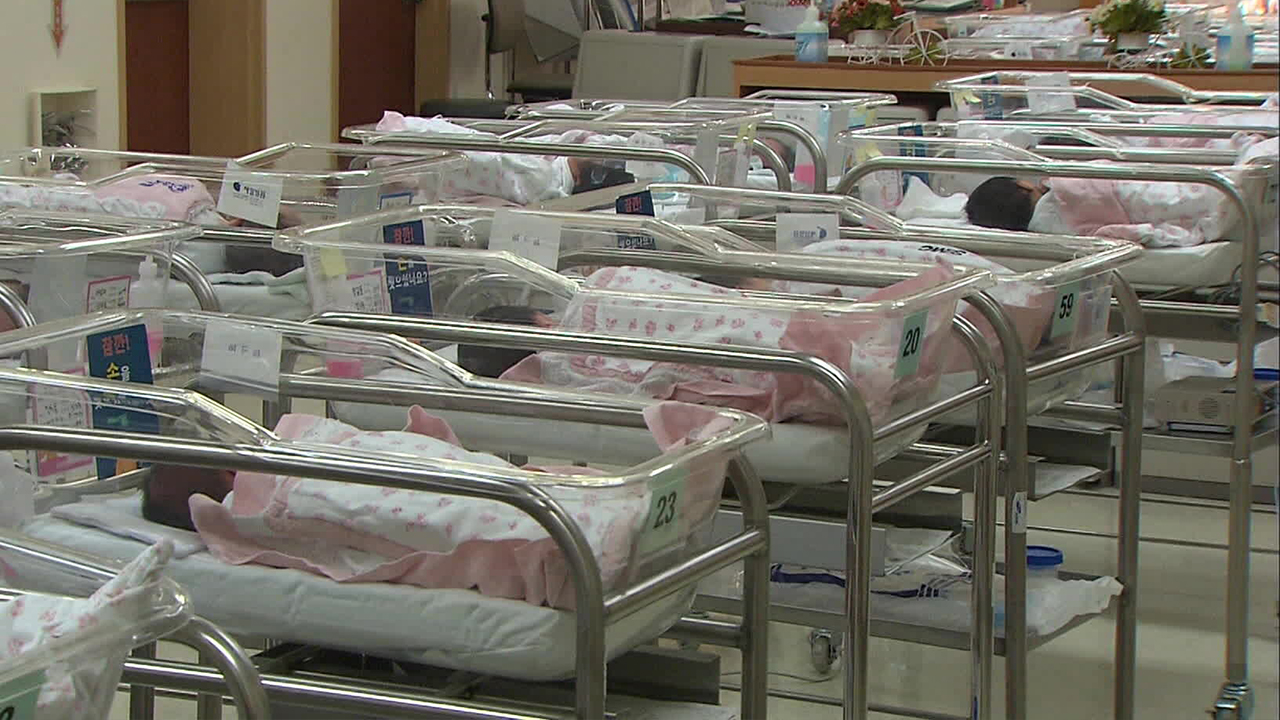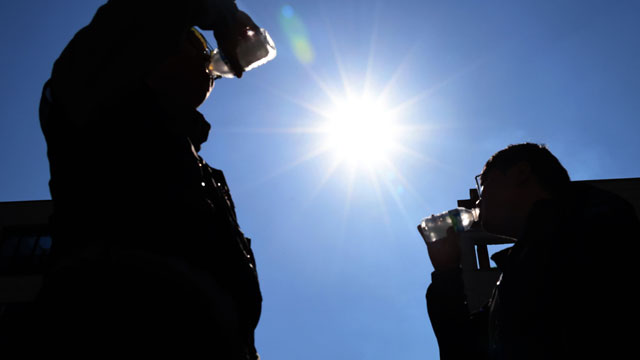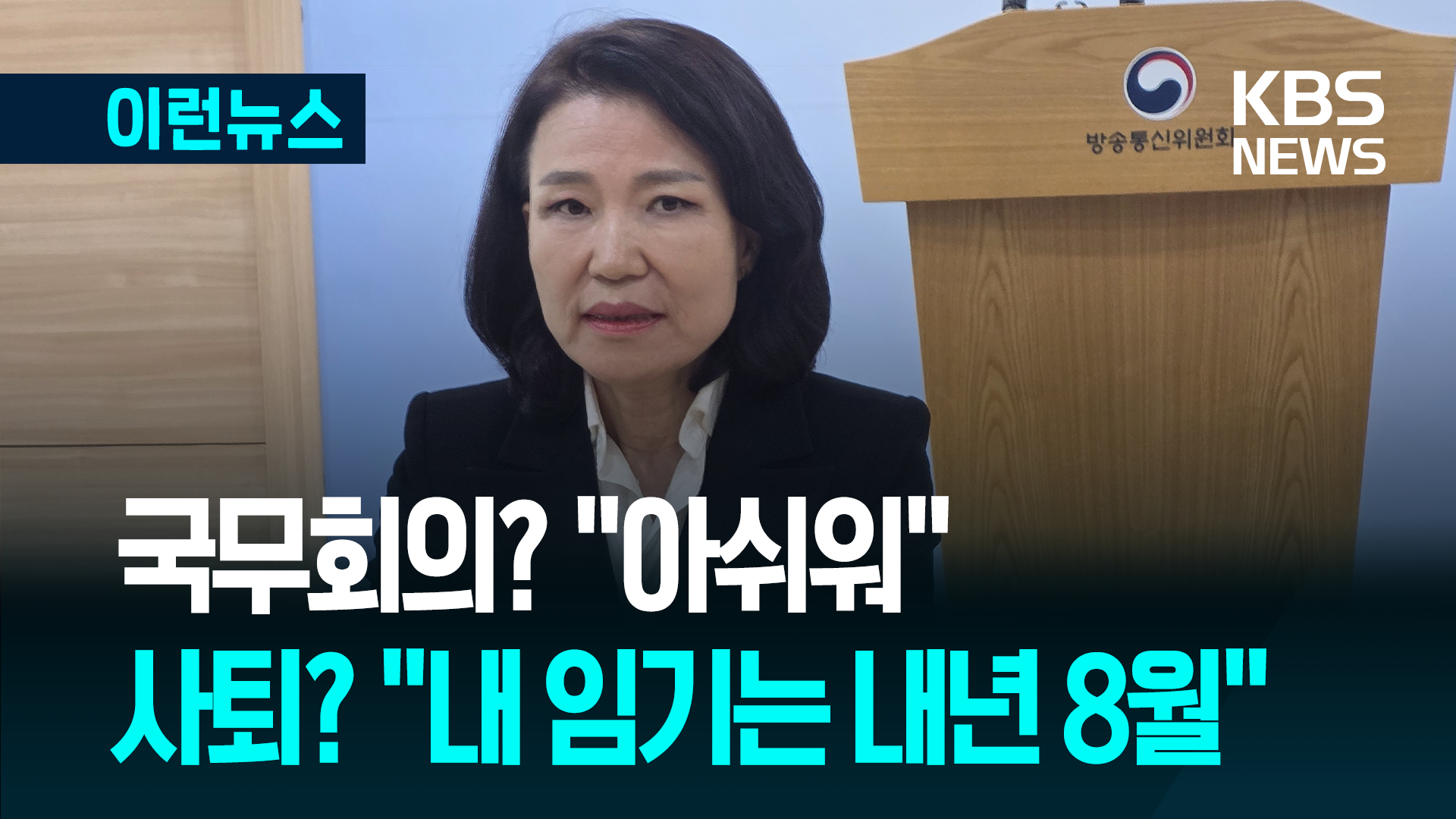Second-child births rise, boosting October's birth rate
입력 2024.12.27 (00:16)
읽어주기 기능은 크롬기반의
브라우저에서만 사용하실 수 있습니다.
[Anchor]
Amid the low birth rate crisis, there have been remarks that "the second child has disappeared," but recently, there has been a slight change in the atmosphere.
The birth of second children has rebounded, leading to a significant increase in the total number of births in October.
This is Hwang Hyun-kyu reporting.
[Report]
["Shiyul boo~ Shiyul boo~"]
["Like my daughter~"]
Shiyul, who was born in June this year.
A five-year age gap, cherished by her older sister—Shiyul is a rare "second child" these days.
[Kim Ri-ra/Layul & Shiyul's mother: "They share a bed, and even when she whines, she stops when she sees her sister's face. (Later on) she will follow what she says."]
It's not just Shiyul.
Although it's a slight increase, the number of second births is rising.
From July to September this year, over 19,000 second children were born.
This marks a rebound after eight and a half years.
This trend continued into October, boosting the total number of births.
In October alone, there were over 21,000 births.
This is an increase of more than 13% compared to a year ago, the largest increase in 14 years.
If this trend continues, could the annual birth rate rise as well?
Although November and December are still left, the projected total fertility rate for this year is 0.74.
While it falls short of 0.78 from two years ago, it is expected to exceed last year's 0.72.
This situation allows for hope that the continuous decline since 2015 may be halted.
Statistics Korea cites the newlywed housing support policy as a background for this rebound.
The Seoul city government has lowered the criteria for multiple children to two children, and special supply for apartments for families with multiple children has also started using the same criteria.
Special loans for newborns also began this year.
[Park Jin-baek/Research Fellow at the Korea Research Institute for Human Settlements: "The experiences gained from raising one child inevitably become a milestone for having a second child. Stability in housing is necessary."]
The surge in marriages delayed by COVID-19, starting last year, is another positive factor for the birth rate.
This is KBS News Hwang Hyun-kyu.
Amid the low birth rate crisis, there have been remarks that "the second child has disappeared," but recently, there has been a slight change in the atmosphere.
The birth of second children has rebounded, leading to a significant increase in the total number of births in October.
This is Hwang Hyun-kyu reporting.
[Report]
["Shiyul boo~ Shiyul boo~"]
["Like my daughter~"]
Shiyul, who was born in June this year.
A five-year age gap, cherished by her older sister—Shiyul is a rare "second child" these days.
[Kim Ri-ra/Layul & Shiyul's mother: "They share a bed, and even when she whines, she stops when she sees her sister's face. (Later on) she will follow what she says."]
It's not just Shiyul.
Although it's a slight increase, the number of second births is rising.
From July to September this year, over 19,000 second children were born.
This marks a rebound after eight and a half years.
This trend continued into October, boosting the total number of births.
In October alone, there were over 21,000 births.
This is an increase of more than 13% compared to a year ago, the largest increase in 14 years.
If this trend continues, could the annual birth rate rise as well?
Although November and December are still left, the projected total fertility rate for this year is 0.74.
While it falls short of 0.78 from two years ago, it is expected to exceed last year's 0.72.
This situation allows for hope that the continuous decline since 2015 may be halted.
Statistics Korea cites the newlywed housing support policy as a background for this rebound.
The Seoul city government has lowered the criteria for multiple children to two children, and special supply for apartments for families with multiple children has also started using the same criteria.
Special loans for newborns also began this year.
[Park Jin-baek/Research Fellow at the Korea Research Institute for Human Settlements: "The experiences gained from raising one child inevitably become a milestone for having a second child. Stability in housing is necessary."]
The surge in marriages delayed by COVID-19, starting last year, is another positive factor for the birth rate.
This is KBS News Hwang Hyun-kyu.
■ 제보하기
▷ 카카오톡 : 'KBS제보' 검색, 채널 추가
▷ 전화 : 02-781-1234, 4444
▷ 이메일 : kbs1234@kbs.co.kr
▷ 유튜브, 네이버, 카카오에서도 KBS뉴스를 구독해주세요!
- Second-child births rise, boosting October's birth rate
-
- 입력 2024-12-27 00:16:28

[Anchor]
Amid the low birth rate crisis, there have been remarks that "the second child has disappeared," but recently, there has been a slight change in the atmosphere.
The birth of second children has rebounded, leading to a significant increase in the total number of births in October.
This is Hwang Hyun-kyu reporting.
[Report]
["Shiyul boo~ Shiyul boo~"]
["Like my daughter~"]
Shiyul, who was born in June this year.
A five-year age gap, cherished by her older sister—Shiyul is a rare "second child" these days.
[Kim Ri-ra/Layul & Shiyul's mother: "They share a bed, and even when she whines, she stops when she sees her sister's face. (Later on) she will follow what she says."]
It's not just Shiyul.
Although it's a slight increase, the number of second births is rising.
From July to September this year, over 19,000 second children were born.
This marks a rebound after eight and a half years.
This trend continued into October, boosting the total number of births.
In October alone, there were over 21,000 births.
This is an increase of more than 13% compared to a year ago, the largest increase in 14 years.
If this trend continues, could the annual birth rate rise as well?
Although November and December are still left, the projected total fertility rate for this year is 0.74.
While it falls short of 0.78 from two years ago, it is expected to exceed last year's 0.72.
This situation allows for hope that the continuous decline since 2015 may be halted.
Statistics Korea cites the newlywed housing support policy as a background for this rebound.
The Seoul city government has lowered the criteria for multiple children to two children, and special supply for apartments for families with multiple children has also started using the same criteria.
Special loans for newborns also began this year.
[Park Jin-baek/Research Fellow at the Korea Research Institute for Human Settlements: "The experiences gained from raising one child inevitably become a milestone for having a second child. Stability in housing is necessary."]
The surge in marriages delayed by COVID-19, starting last year, is another positive factor for the birth rate.
This is KBS News Hwang Hyun-kyu.
Amid the low birth rate crisis, there have been remarks that "the second child has disappeared," but recently, there has been a slight change in the atmosphere.
The birth of second children has rebounded, leading to a significant increase in the total number of births in October.
This is Hwang Hyun-kyu reporting.
[Report]
["Shiyul boo~ Shiyul boo~"]
["Like my daughter~"]
Shiyul, who was born in June this year.
A five-year age gap, cherished by her older sister—Shiyul is a rare "second child" these days.
[Kim Ri-ra/Layul & Shiyul's mother: "They share a bed, and even when she whines, she stops when she sees her sister's face. (Later on) she will follow what she says."]
It's not just Shiyul.
Although it's a slight increase, the number of second births is rising.
From July to September this year, over 19,000 second children were born.
This marks a rebound after eight and a half years.
This trend continued into October, boosting the total number of births.
In October alone, there were over 21,000 births.
This is an increase of more than 13% compared to a year ago, the largest increase in 14 years.
If this trend continues, could the annual birth rate rise as well?
Although November and December are still left, the projected total fertility rate for this year is 0.74.
While it falls short of 0.78 from two years ago, it is expected to exceed last year's 0.72.
This situation allows for hope that the continuous decline since 2015 may be halted.
Statistics Korea cites the newlywed housing support policy as a background for this rebound.
The Seoul city government has lowered the criteria for multiple children to two children, and special supply for apartments for families with multiple children has also started using the same criteria.
Special loans for newborns also began this year.
[Park Jin-baek/Research Fellow at the Korea Research Institute for Human Settlements: "The experiences gained from raising one child inevitably become a milestone for having a second child. Stability in housing is necessary."]
The surge in marriages delayed by COVID-19, starting last year, is another positive factor for the birth rate.
This is KBS News Hwang Hyun-kyu.
-
-

황현규 기자 help@kbs.co.kr
황현규 기자의 기사 모음
-
이 기사가 좋으셨다면
-
좋아요
0
-
응원해요
0
-
후속 원해요
0















이 기사에 대한 의견을 남겨주세요.